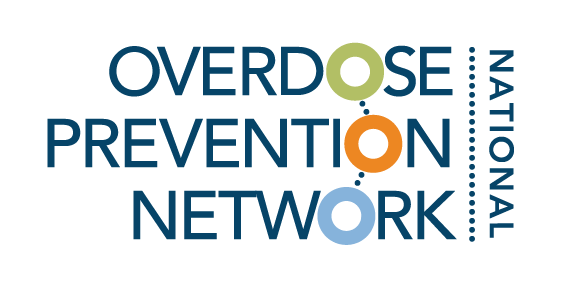
Resource Library
Toolkits, guides, and other resources vetted by experts in overdose prevention.
Filter by category and tags, or search by keyword (ex. COVID-19, harm reduction).
Fact Sheet: The Impact of the Overdose Crisis on Black Communities in the United States
Drug overdoses have affected all communities across the United States. Yet there are notable racial and ethnic disparities that have emerged over the past 25 years, even though people of all races and ethnicities use drugs at similar rates. Racism, lack of access to treatment and services, targeted drug enforcement, and stigma are some of the most common factors contributing to these tragic losses in our communities. DPA has developed three new fact sheets that describe overdose death trends among Black, Latinx, and Native American communities. They also provide policy recommendations and strategies for how our elected officials can save lives.
Fact Sheet: The Impact of the Overdose Crisis on Native American Communities in the United States
Drug overdoses have affected all communities across the United States. Yet there are notable racial and ethnic disparities that have emerged over the past 25 years, even though people of all races and ethnicities use drugs at similar rates. Racism, lack of access to treatment and services, targeted drug enforcement, and stigma are some of the most common factors contributing to these tragic losses in our communities. DPA has developed three new fact sheets that describe overdose death trends among Black, Latinx, and Native American communities. They also provide policy recommendations and strategies for how our elected officials can save lives.
Fentanyl and Public Drug Use: A Doctor Gives the Facts
The Drug Policy Alliance’s newest video resource is focused on dispelling myths surrounding fentanyl and features, Dr. Goodman-Meza an expert on the intersection of infectious diseases and addiction. He knows better than most how crucial it is for us to approach drug use and the overdose crisis with solutions based in health and science.
Preventing Overdose and Reducing Drug-Related Harm Policy and Implementation Guides for State and Local Change
ChangeLab Solutions has developed guides that offer a range of evidence-based policy strategies and a roadmap to policy implementation that can advance equity and prioritize care over punishment for people who use drugs. The strategies are intended to support state and local decision makers, government agency staff, public health practitioners, and community members in considering policies to prevent overdose and reduce other drug-related harm in their communities.
Overview of Recent Substance Use Policy and Legislation in California 2024
The following document summarizes recent policies in California aimed at overdose prevention, substance use disorders (SUD), and mental health based on a presentation by Riana King, Principal Consultant with the California Assembly Committee on Health, during the Summer 2024 COPN Convening. The legislative policies are categorized into four main areas: Funding Capacity, Treatment & Access, Harm Reduction & Prevention, and Oversight & Accountability.
ASTHO’s Public Health Legal Mapping Center
Explore ASTHO’s Public Health Legal Mapping Center, which utilizes interactive tools to analyze state laws on overdose prevention and public health infrastructure, tracking changes and trends over time.
The New Drug Talk: Connect to Protect Flyer
A flyer for the The New Drug Talk Connect to Protect on how to talk to kids about fentanyl. It is a two-sided flyer, with one side in English and the other Spanish.
The New Drug Talk: Connect to Protect Toolkit
This toolkit provides you with content to amplify the New Drug Talk message and includes: resources to share on social media, messaging guidelines, and draft email outreach.
COPN Accelerator 4.0 Case Studies: Health Equity Strategies in Overdose Prevention
What steps can communities take to incorporate health equity in overdose prevention? The following summary provides concrete examples of thoughtful approaches to applying health equity in overdose prevention at the local level to address rising rates of overdose. Case studies were drawn from overdose prevention coalitions participating in the California Overdose Prevention Network (COPN) Accelerator 4.0 Program. These can serve as models for other coalitions and organizations across the country.
Naloxone Pocket Card Example
OD Free Marin provided their naloxone instructional pocket card PDF for other individuals to use as an example to adapt for local use.
Coalition Building II: Maintaining a Coalition
University of Kansas has created curriculm on the importance of maintenance within a coalition. This covers what needs to be maintained, and how to maintain your work successfully. The curriculum explores some alternatives to simple maintenance -- coalition growth, for example, or changing direction, and even ending. But the key point about maintenance is that it won't happen all by itself. It takes effort -- conscious, planned, and ongoing.
2023 State of the States: Legislative Roadmap for Reducing Overdose Deaths and Increasing Access to Treatment (the Roadmap)
The Legislative Analysis and Public Policy Association developed the 2023 State of the State, which guides state leaders on the most effective approaches to addressing the opioid and other drug epidemic by identifying 10 evidence-based policy approaches to reduce overdoses. Each of the 10 strategies outlined in the Roadmap points to a specific type of policy that states can implement to reduce overdose deaths and increase access to substance use treatment.
ADAPT: Cultivating Prevention Videos
A Division for Advancing Prevention and Treatment (ADAPT) supports the National High Intensity Drug Trafficking Area (HIDTA) Program by operationalizing the National HIDTA Prevention Strategy. ADAPT and HIDTA has created curriculum for implementing and evaluating substance use prevention practices within communities and has created videos to assist communities with keeping up to date with advances in prevention science. Their video library has s variety of trainings and technical webinars to cultivate, nurture, and support implementation of their prevention programming and curriculum.
ADAPT: Prevention Intervention Resource Center
The National High Intensity Drug Trafficking Area (HIDTA) Program has developed the Prevention Intervention Resource Center (PIRC). PIRC serves as a repository for publicly available resources for HIDTA communities to advance their evidence-based prevention programming. They have free curriculum available that includes: Sharing Substance-Related Information with Youth 11-18: Integrating the Best Available Evidence to Prevent Unintended Harm, Developing a Communications Plan, Developing Messaging Messaging through Mass Media, and so much more.
Overview of Youth Overdose Prevention Policies in California
During the Fall 2023 COPN Convening that focused on advancing youth overdose prevention, treatment and harm reduction in California, COPN Impact Coach Mary Maddux-Gonzalez reviewed recent policies (2023) that had been passed related to youth overdose prevention and treatment. This handout provides more information on the recent policies that have initiatives that emphasize naloxone accessibility, on-campus treatment, conservatorship updates, and fentanyl detection measures.
Prevention Technology Transfer Center Network: Products & Resources
The Prevention Technology Transfer Center (PTTC) Network provides training and technical assistance services to anyone in the substance misuse prevention field. It does this by developing and disseminating tools and strategies needed to improve the quality of substance misuse prevention efforts; providing intensive technical assistance and learning resources to prevention professionals in order to improve their understanding of prevention science, epidemiological data, and implementation of evidence-based and promising practices; and, developing tools and resources to engage the next generation of prevention professionals.
Substance Use Disorder (SUD) Prevention 101: Key Concepts in Prevention
The Center for Applied Research Solutions created this presention on key concepts in prevention of substance use disorders. This presentation covers the 6 major prevention strategies that it has developed that cover the following topics for you to apply in your overdose prevention work: information dissemination, education, alternatives, problem ID and referral, community based-processes, and environmental prevention strategies.
Focus on Prevention: Strategies and Programs to Prevent Substance Use
The U.S. Department of Health and Human Services(HHS), Substance Abuse and Mental Health Services Administration (SAMHSA), has developed this guide as a starting point to help a wide range of groups and communities move from concerns about substance use to proven and practical solutions. This guide offers brief, easy-to-read information that organizations can use to plan and deliver prevention strategies in a wide array of settings, through a variety of methods.
Overdose Lifeline
The Overdose Lifeline is a non profit overdose prevention organization based in Indiana that has informational pages on harm reduction and also has free youth focused educational programs like Aaron's Place: Exchange and Camp Mariposa.
Operation Prevention
The DEA has joined forces with Discovery Education to provide no-cost online tools that support every member of the community with the power of prevention. Help kickstart life-saving conversations today with standards-aligned English & Spanish-language resources for students in grades 3-12, plus additional resources designed for educators, families, and professionals.









